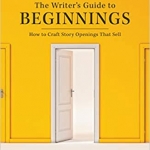Blog Writing Begins with Answering the Question

In order to grab and keep readers’ attention, writers must answer the questions every reader asks as a story begins – questions that need to be answered if the reader is to relax and enjoy the ride,” the authors of The Writer’s Guide to Beginnings explain. After all, if readers don’t care what happens next, they won’t read on.”
The “big idea” of any story is the “hook” that sells that story to agents and editor, (and, in the case of blog content writing, to online searchers), has to be compelling enough to get your story off to a great start. “The most important thing your opening needs to do is this: Keep the reader reading,” author Paula Munier teaches. “In truth,” she admits, “it doesn’t matter how good your opening scene is if the idea on which your story is based is flawed, either in storytelling terms or marketing terms.”
Making messages deliver impact is, of course, “our thing” as business blog content writers. As both Munier’s book and one by Chip and Dan Heath, Made to Stick, teach, we can’t succeed if our messages don’t break through the clutter to get people’s attention. Opening your blog post with a startling statistic can be one way to grab visitors’ attention, I often point out to content writers for Say It For You clients.
Just as consumers would not be searching for the right auto shop/ jewelry store/ plumber/ healthcare provider, etc. unless they already felt the need for that service or product type, searchers who land on your blog are already interested in and have a need for what you offer. Now, as Paula Munier cautions, the essential questions on searchers’ minds need to be answered as they decide whether to read on or click away.
Blogs, as I so often stress to business blog writers, are not advertisements or sales pieces (even if increasing sales is the ultimate goal of the business owner). Whatever “selling” goes on in effective blogs is indirect and comes out of business owners sharing their passion, special expertise and insights in their field. When blog posts “work”, readers are moved to think, “I want to do business with him!” or “She’s the kind of person I’ve been looking for!”
Before that ultimate “Ah, yes!” effect can take place, readers newly arrived after clicking on a blog title link need reassurance that the title and the actual blog post content are congruent. In other words, readers have arrived at the right place for finding the answers they were seeking.
In a very real way, blog writing begins – and ends – with answering that very question.






Follow us online!